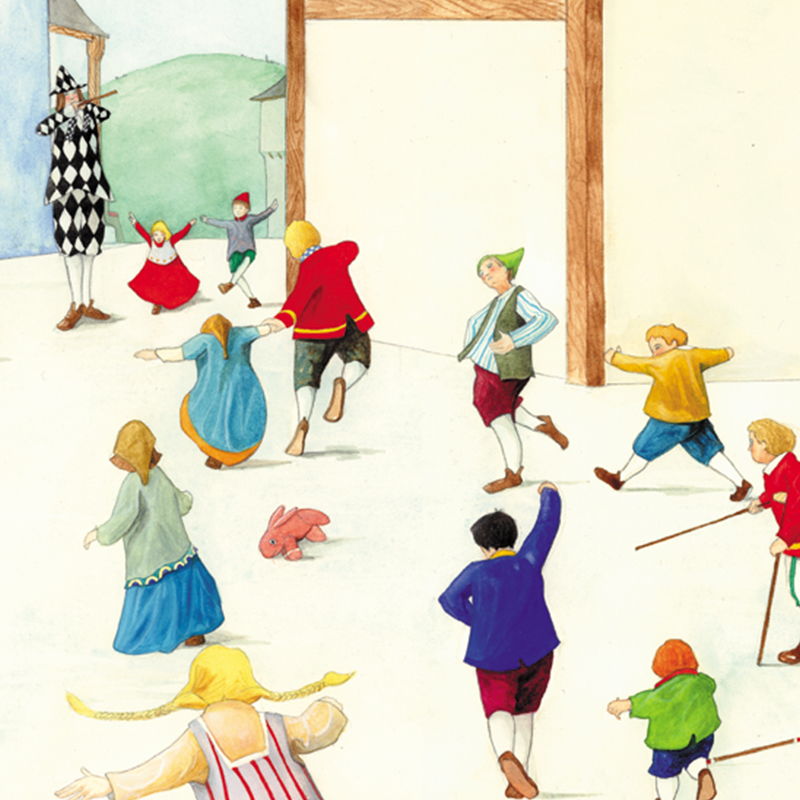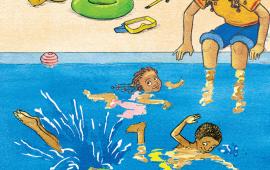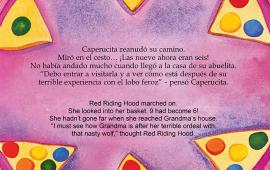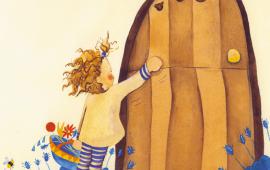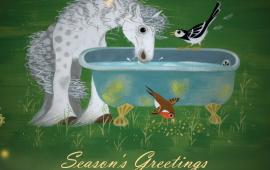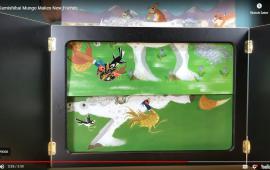Will The Interactive Elaborative Storytelling (IES) Method Work For You?
Stories are our business (and our delight), and we know from experience and observation that they’re an excellent teaching tool as well as essential to help children (and adults) develop oracy, logical thinking, vocabulary, memory skills, and compassion and empathy. It’s always reassuring, however, to see that we’re not the only people who know this. We also love to learn about research being carried out by academics into the science of storytelling.
Educators and psychologists from the Universities of Regensburg and Würzburg in Germany assessed three different methods of storytelling amongst 126 preschoolers in total. The methods assessed what authors describe as “Interactive Elaborative Storytelling (IES)”, which incorporated techniques of word-learning and storytelling, and which was contrasted with an “Elaborative Storytelling” group, where children used word-learning techniques but no storytelling; and a Read-Aloud group.
The authors also examined existing evidence to support their research. For our purposes, one of the most relevant areas they explored was reading aloud. We especially like the way they describe some of the techniques they used: “rhetoric questions, comments, paraphrasing, and synonyms”. And since you know how much we love visual (and audio) support for language learning, we enjoyed their emphasis on using illustrations to support the activity and help with understanding. In this case, the pictures were drawn by student assistants, with around 10 images per story, and were shown to the children at intervals throughout the sessions.
Another interesting finding was that restlessness levels amongst the children was least apparent in the group where the “Interactive Elaborative Storytelling” method was used. While the three methods tested had different results in some areas, such as behaviour, one intriguing finding was that vocabulary acquisition was fairly consistent across all three groups.
The two stories used were two of the less well-known tales from Grimm, The Old Woman in the Forest and The Queen Bee. While the language used in this study was German, we can’t see any reason why the findings wouldn’t apply to English as well (or pretty much any other language, come to that). The stories chosen were deemed to be age and audience appropriate. Did you know we have a range of folk-tales from around the world? Give the retelling of Goldilocks a go, or be brave alongside the Three Billy-Goats Gruff. You can find details of all of our titles in the new autumn catalogue.
The full-text of the research article is freely available at the link below.
References
Educators and psychologists from the Universities of Regensburg and Würzburg in Germany assessed three different methods of storytelling amongst 126 preschoolers in total. The methods assessed what authors describe as “Interactive Elaborative Storytelling (IES)”, which incorporated techniques of word-learning and storytelling, and which was contrasted with an “Elaborative Storytelling” group, where children used word-learning techniques but no storytelling; and a Read-Aloud group.
The authors also examined existing evidence to support their research. For our purposes, one of the most relevant areas they explored was reading aloud. We especially like the way they describe some of the techniques they used: “rhetoric questions, comments, paraphrasing, and synonyms”. And since you know how much we love visual (and audio) support for language learning, we enjoyed their emphasis on using illustrations to support the activity and help with understanding. In this case, the pictures were drawn by student assistants, with around 10 images per story, and were shown to the children at intervals throughout the sessions.
Another interesting finding was that restlessness levels amongst the children was least apparent in the group where the “Interactive Elaborative Storytelling” method was used. While the three methods tested had different results in some areas, such as behaviour, one intriguing finding was that vocabulary acquisition was fairly consistent across all three groups.
The two stories used were two of the less well-known tales from Grimm, The Old Woman in the Forest and The Queen Bee. While the language used in this study was German, we can’t see any reason why the findings wouldn’t apply to English as well (or pretty much any other language, come to that). The stories chosen were deemed to be age and audience appropriate. Did you know we have a range of folk-tales from around the world? Give the retelling of Goldilocks a go, or be brave alongside the Three Billy-Goats Gruff. You can find details of all of our titles in the new autumn catalogue.
The full-text of the research article is freely available at the link below.
References
- Vaahtoranta, E et al (2019), Interactive Elaborative Storytelling: Engaging Children as Storytellers to Foster Vocabulary, Frontiers in Psychology 10 (1534), available at: https://www.frontiersin.org/articles/10.3389/fpsyg.2019.01534/full [accessed 11 September 2019]
Related Posts
-
You, me and those who came before - Refugee Week 2019
-
The elephant in the room? A few facts about our largest land animal
-
Personal in the nicest possible way – Check Out the great new 2019 SEN Resources Catalogue from Mantra Lingua - Bilingual books and more
-
Making a splash!
-
PENpal Supports Focus on Oral Language Skills
-
The benefits of bilingual books - six pertinent questions (and answers)
-
Poet laureate or children's laureate - what's the difference?
-
Talking To The Wall? Interactive Synchronised Calendars And Diaries, New For 2020
-
Season's Greetings
-
Once upon a time, in a not-so-faraway land…

